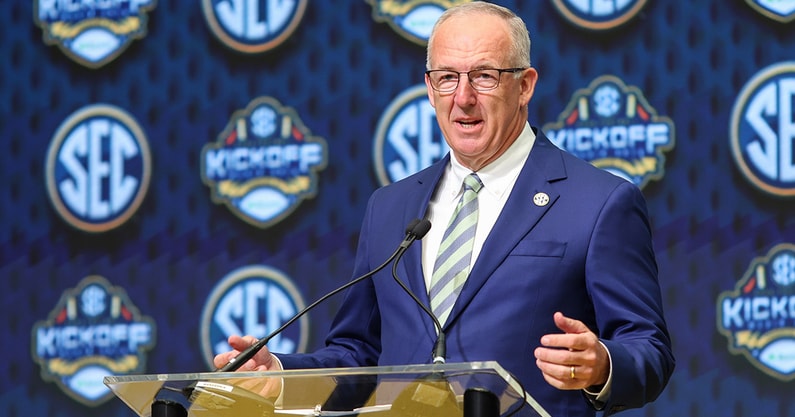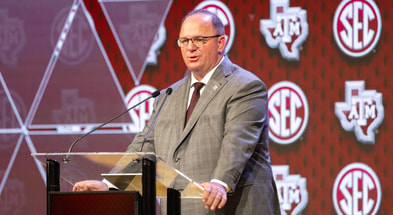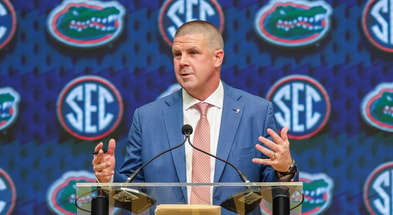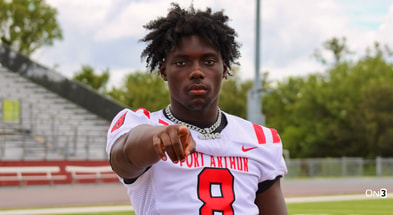Sankey Provides Update on Turbulent Times for the SEC

ATLANTA — The environment major college football finds itself in currently is, to put it mildly, complex.
Universities are about to start paying players; NIL has become an issue nationwide with states passing their own regulations as the U.S. Congress struggles to find consensus. There’s arguments over the size of the College Football Playoff, agent representation and even the number of times a player can transfer.
During his comments to open SEC Media Days, SEC Commissioner Greg Sankey mentioned some of the obstacles college football is currently dealing with that it has never had to face before.
“We have congressional activity. We wonder what might be the next state law to be introduced or the next lawsuit,” he said. “We’re interested in litigation that has resulted in individuals being eligible to participate in college sports well into their mid-20s. That starts to remove opportunities for aspiring high school athletes.”
The pressures that the sport, and the SEC in particular, are under is not lost on Sankey. Still, he believes there will eventually be progress made.
“From my perspective, college athletics is not broken. College athletics is not broken. It is under stress,” he said. “It is strained. The answers we seek are tied into the complexities that have been referenced over time.”
Sankey mentioned the resolution of the House v. NCAA lawsuit, which led to the creation of an NIL clearing house and at least the start of regulating name, image and likeness activity. He acknowledged the adjustment has not been a smooth one.
“There’s been plenty of naysayers in the last 14 days, but the settlement went into effect July 1, and we’re here July 14 while working through historic and transformational change,” he said. “We’re in the middle of change, and in the middle of anything significant, it will get messy.”
The idea of expanding the CFP has certainly been messy and continues to be so. The two most powerful conferences, the SEC and Big Ten, have supported expansion of the playoff, but disagree on the format.
Sankey and the SEC support a “5-11” format, a setup that would mean automatic bids for five conference winners and 11 at-large bids in a 16-team playoff. The Big 10 wants guaranteed spots for each conference, with the balance heavily weighted towards itself and the SEC.
“We think growth beyond 12 could be positive and should be pursued. There’s also a belief that the process for selecting teams to participate in the College Football Playoff can be updated and improved itself,” Sankey said. “Much more work is needed, and more needs to be understood.”
As far as regular season schedules go, the idea of expanding to nine conference games remains up in the air. Sankey emphasized the difficulty of the SEC’s current schedule and noted that teams are required to play at least one other Power 4 opponent or Notre Dame, but added that the ninth game that has been long sought-after by fans and television partners remains a possibility.
“It won’t linger terribly much longer,” Sankey said of making a decision to add a ninth conference game. “We have to make decisions about the (2026) season and adjust. If we’re going to go to nine games, then there have to be games moved or rescheduled. If we stay at eight, probably a little easier on that part of the logistics. Once we make a decision in the conference office, we’re pretty much ready to go.”
























